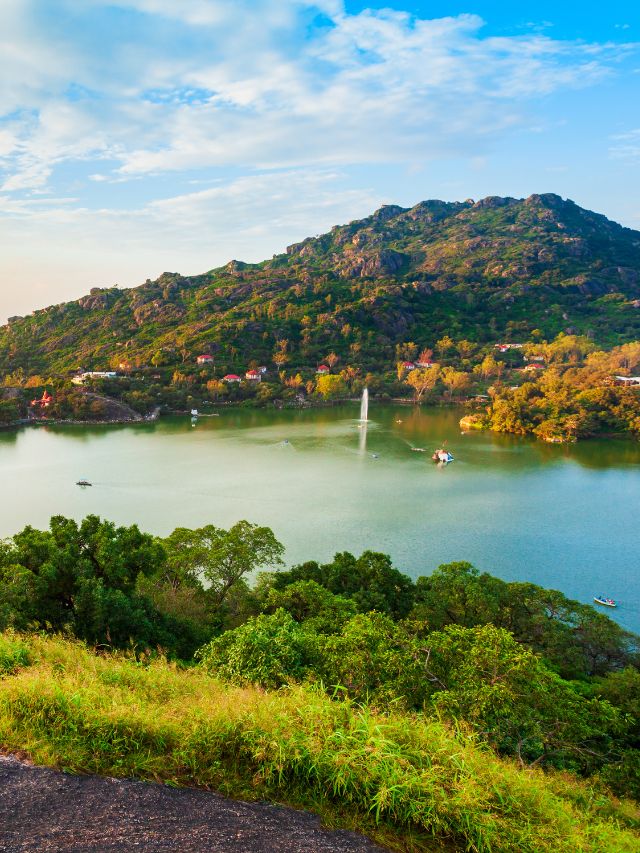Here are 10 key points How Wellness Tourism Is Emerging as the Next Big Travel Trend:
- Shift in Travel Preferences – More travelers are choosing destinations focused on health and well-being rather than just leisure and sightseeing.
- Post-Pandemic Growth – The demand for holistic healing experiences has surged as people prioritize immune health, stress reduction, and overall resilience.
- India’s Leading Role – With Ayurveda, yoga, and naturopathy, India is becoming a global hub for wellness tourism, attracting both domestic and international visitors.
- Government Initiatives – Programs like the Heal in India campaign and the Ayush visa are making it easier for international tourists to access wellness treatments.
- Affordability & Authenticity – India offers traditional healing therapies at a fraction of Western costs, making wellness tourism more accessible.
- Rise of the Middle Class – Once exclusive to luxury travelers, wellness tourism is now becoming popular among India’s middle-class, who are integrating retreats into their annual routines.
- Ayurveda’s Growing Popularity – Treatments like Panchakarma and therapies for chronic illnesses, stress, and metabolic disorders are in high demand.
- Expanding Wellness Destinations – Kerala, Rishikesh, Mysuru, and Puducherry are emerging as key destinations for wellness tourism.
- Changing Consumer Mindset – More people are seeing wellness retreats as a proactive lifestyle choice rather than a last resort for health issues.
- Future Potential – Despite rapid growth, industry experts believe India is still in the early stages of tapping into its full wellness tourism potential.
Wellness Tourism: The Growing Trend in Travel
Travel is no longer just about sightseeing or relaxation—more people are choosing destinations that focus on health and well-being. This shift has become especially evident after the pandemic, as travelers seek holistic healing experiences to boost immunity, reduce stress, and improve overall wellness. India is at the forefront of this movement, attracting both domestic and international tourists with its rich heritage of Ayurveda, yoga, and naturopathy. Government initiatives like the “Heal in India” campaign and increased investment in wellness tourism infrastructure are further strengthening the country’s position as a global wellness hub.
Wellness Travel Becoming More Accessible
Once considered a luxury for the wealthy, wellness tourism in India is now gaining popularity among middle-class travelers. With a growing awareness of preventive healthcare, more people are turning to Ayurveda, naturopathy, and holistic therapies. Many Indians now dedicate a few weeks each year to wellness retreats, seeking not just relaxation but also treatments for chronic conditions, metabolic disorders, and stress-related ailments. This trend highlights a broader focus on long-term health and well-being.
Also Read: Top 10 Dream Wedding Destinations in India
Sidarth Dominic, CEO of CGH Earth Wellness, emphasizes the importance of a holistic approach to healing, stating, “True wellness can only be achieved by treating the individual as a whole—body, mind, and spirit. Our approach involves time-tested disciplines like Ayurveda, Naturopathy, and Yoga to address the root causes of imbalance and disease.” He notes a rising demand among Indian travelers, with many integrating annual wellness retreats into their lifestyle.
India’s Wellness Tourism Industry on the Rise
India’s wellness tourism market is experiencing significant growth, valued at USD 19.43 billion in 2024 and projected to reach USD 29.88 billion by 2031 at a CAGR of 6.45%. On a global scale, the industry is expanding rapidly, expected to grow from USD 895.09 billion in 2024 to USD 978.14 billion by 2025 at a 9.3% CAGR. India stands out due to its affordability and authenticity in ancient healing practices, offering world-class wellness experiences at a fraction of Western costs.
International travelers have long been drawn to India’s Ayurvedic and yoga retreats, with demand surging for their preventive and restorative benefits. While medical and wellness tourism saw a dip in 2020 with 183,000 visitors, it rebounded to 475,000 in 2022 and exceeded 504,000 in the first ten months of 2023. To support this growth, the Indian government introduced initiatives like the Ayush visa, making it easier for international visitors to access Ayurvedic and wellness treatments.
Ayurveda’s Global Appeal
Dr. Somit Kumar, Director of Research at AVP Research Foundation in Coimbatore, highlights the increasing international interest in Ayurveda. “There is growing awareness about Ayurveda’s preventive benefits, including its role in regenerative medicine and anti-aging. Stress-related issues are a major focus, and Ayurveda provides holistic solutions for the mind, body, and soul.” He adds that while Ayurveda is widely used for treating chronic conditions like musculoskeletal disorders, it is also gaining recognition for addressing digestive and psychosomatic ailments. Panchakarma, a detoxification therapy, remains one of the most sought-after treatments among wellness travelers.
Shift in Wellness Perceptions
Raj Rishi Garg, Promoter of Vaidyaratnam Vrindavan Ayurveda Chikitsalayam in Himachal Pradesh, observes a shift in how people perceive wellness centers. “Guests are no longer coming only for post-illness recovery; they now seek proactive self-care. We see more young professionals and urban dwellers turning to Ayurvedic therapies for stress management, immunity building, and long-term health.” He notes a rise in occupancy rates as more people integrate holistic healing into their lifestyles.
Despite this growth, industry experts believe India has only scratched the surface of its potential in wellness tourism. “Our retreats are designed to foster deep healing and rejuvenation,” says Dominic. “While we’ve made great progress, I believe we’re just beginning to tap into our true capabilities.”
Expanding Wellness Experiences
Beyond Ayurveda, India offers a range of wellness experiences, including yoga retreats, naturopathy clinics, spiritual healing programs, and modern spa therapies that incorporate traditional treatments. Destinations like Rishikesh, Mysuru, Kerala, and Puducherry have become key wellness hubs, attracting both domestic and international tourists. The rising demand has led to the expansion of wellness retreats catering to a broader audience, with more affordable options now available beyond the luxury market.
The Future of Wellness Tourism in India
India’s rise as a global wellness destination reflects a growing shift toward holistic health and preventive care. With Ayurveda, yoga, and naturopathy at its core, the country offers authentic healing experiences that appeal to a wide range of travelers. Government initiatives like the Ayush visa and “Heal in India” campaign are making wellness treatments more accessible, further fueling the industry’s growth.
As self-care becomes a priority, India’s wellness tourism market is set to expand, offering specialized therapies for stress relief, chronic conditions, and overall well-being. With destinations like Kerala, Rishikesh, Mysuru, and Puducherry leading the way, India is poised not only to maintain its legacy in holistic healing but also to redefine the future of global wellness tourism.
Also Read: Top 12 Bucket List Destinations to Visit in 2025
Check Latest Stories:





